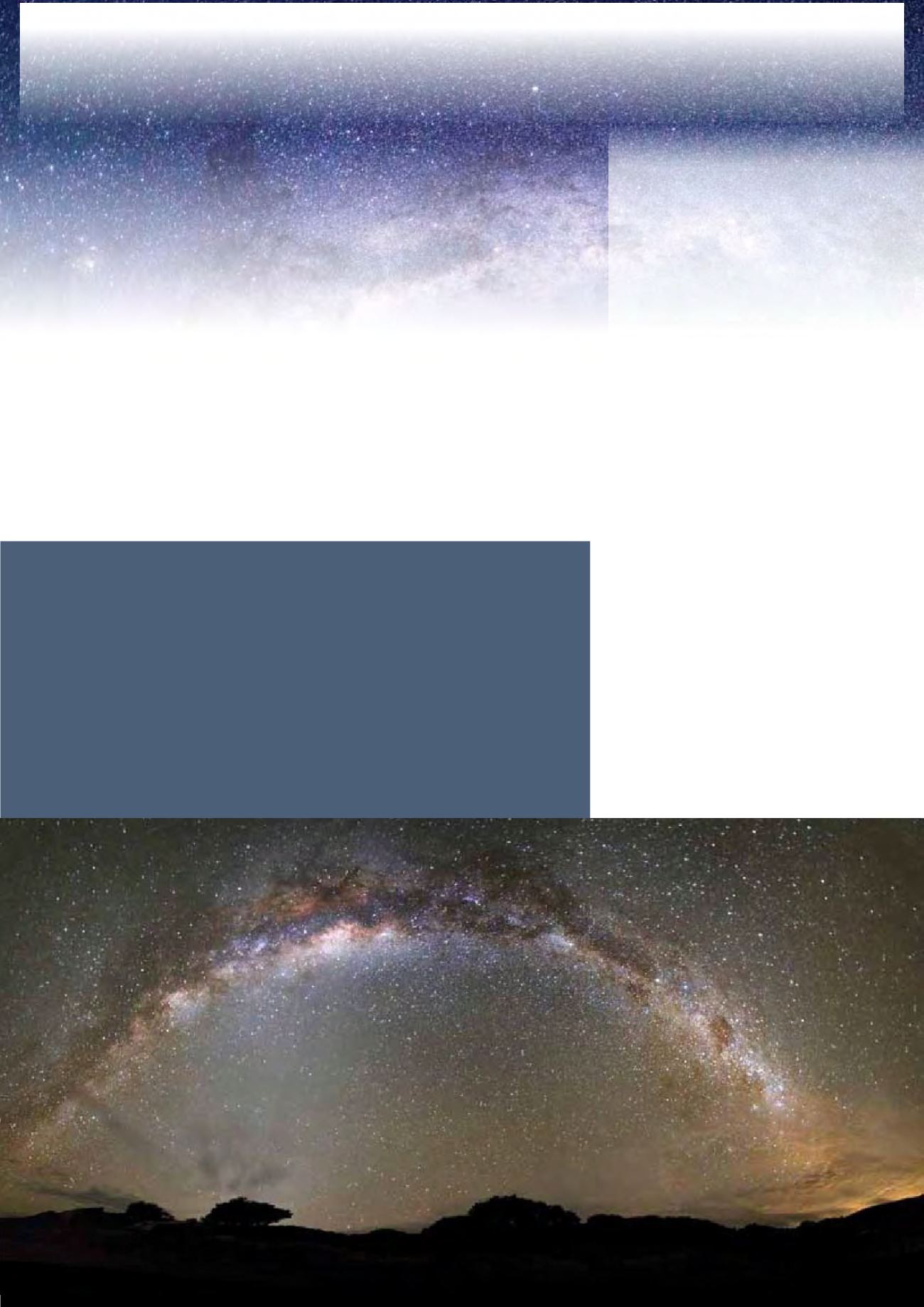

by IAN PREECE
From Ian about ‘PORT JACKSON’.
“We are particularly blessed on the
Coromandel which offers as close to perfect
conditions for astrophotography as you can
get. And located at the northern tip of the
Coromandal with minimal light pollution is
the best of the best, Port Jackson. It looks
out toward Little Barrier and Great Barrier
Islands, the first island in the world to receive
International Dark Sky ‘Sanctuary’ status.
“I had been there a number of times
to photograph the Milky Way. On each
occasion there was something that didn’t
quite work out, meaning I couldn’t get the
shot I wanted. On this trip I camped by
the beach for three days waiting for my
opportunity. I wasn’t optimistic but set the
alarm this night for 3:30am when I knew the
moon would have set.
“I was welcomed by an amazing view of the
Milky Way stretching from horizon to horizon.
I used an ultra wide-angle lens and took 16
separate images to compose this panorama.
It took several days of work at the computer
to stitch the images together, but the result
was worth it.”
Port Jackson
30
COROMANDEL LIFE 2018 WINTER/EARLY SPRING
This specialized type of photography
records images of astronomical objects,
celestial events, and large areas of the night
sky. Cameras have been a great tool for
astronomers since professor John William
Drape made the first photograph of the moon
in 1840, but it was not until the late 19th
century that advances in technology allowed
for detailed stellar photography.
Besides being able to record the details of
objects such as the Moon, Sun, and planets,
astrophotography has the ability to image
objects otherwise
invisible
to the human eye
such as dim stars, nebulae and galaxies. This
is done by long time exposure since both film
and digital cameras can accumulate starlight
photons over long periods of time.
Now, photography fans with no scientific
knowledge have the ability to follow their
passion for astrophotography with easy access
to cameras, tripods, GPS and phone apps.
Anyone can learn to shoot stop-motion videos,
landscapes, panoramas, and 3D virtual reality.
Even those living in urban areas can capture
the night skies with the use of special filters
that screen out the light pollution, and
computer techniques that can remove ambient
urban light from images.
There’s a whole new undiscovered realm out
there, waiting to be explored by the camera’s
eye. Thrilling shots can easily be taken with
readily available equipment, images to remind
us that we are merely a drop in the bucket of
the wider universe.
Little did we know that selecting Ian Preece’s stunning Milky Way shot for our
cover would prompt such a fascinating journey of discovery to learn more about
astrophotography, a growing interest among photographers and amateur astronomers.
Then we couldn’t resist sharing some of the awesome photos we found with our
readers, as well as a bit about the talented photographers that captured them.
Astrophotographers
grateful for dark NZ skies
from Alastair Brickell
The stunning images presented in this
edition are only possible due to the
wonderfully dark skies that most Kiwis enjoy.
This is a gem of our natural environment we
have grown up with, thanks to our sparsely
populated country. And so many people in
the rest of the world can’t see what we tend
to take for granted!
National Geographic reported in 2016, “80
percent of Americans can’t see the Milky Way
anymore. A new generation can no longer
appreciate this beauty.” Why? – light pollution
The main cause of this global problem is
bright street lights lining roads and highways
as well as shopping malls, high rises, car
yards, sports grounds and security lights.
City lights are often extremely bright, and
poorly designed light fittings often spill light
upwards rather than to the ground where it is
actually needed.
New more energy efficient LED lights are
becoming more widely used, especially
for street lighting. Unfortunately the first
generation have had a very harsh white light,
rich in blue wavelengths, which actually
contributes to the problem. In addition there
are serious concerns about the health effects;
most recently by the American Medical
Association (AMA) who have linked this light
to increasing rates of cancer, sleep disorders
and other illnesses. Newer LEDs with a
warmer yellowish glow are less harmful and
are gaining popularity around the world, but
not as yet in NZ.
















